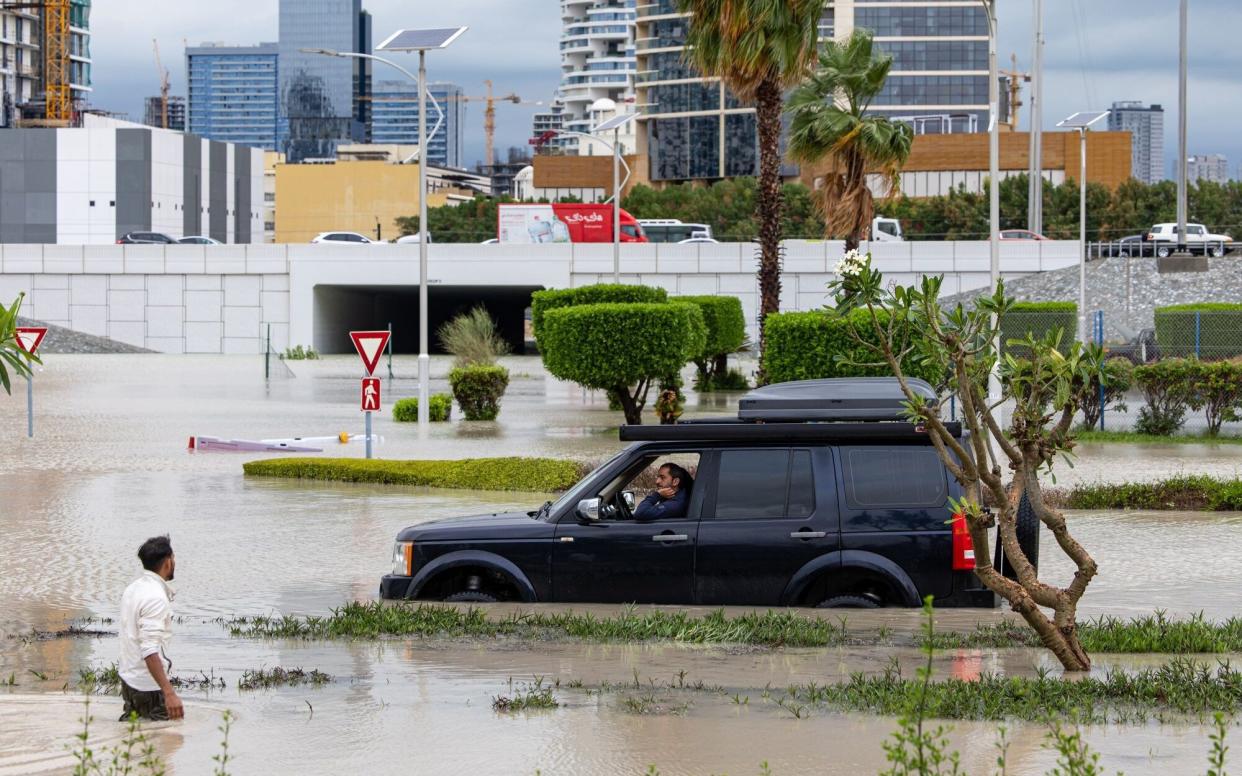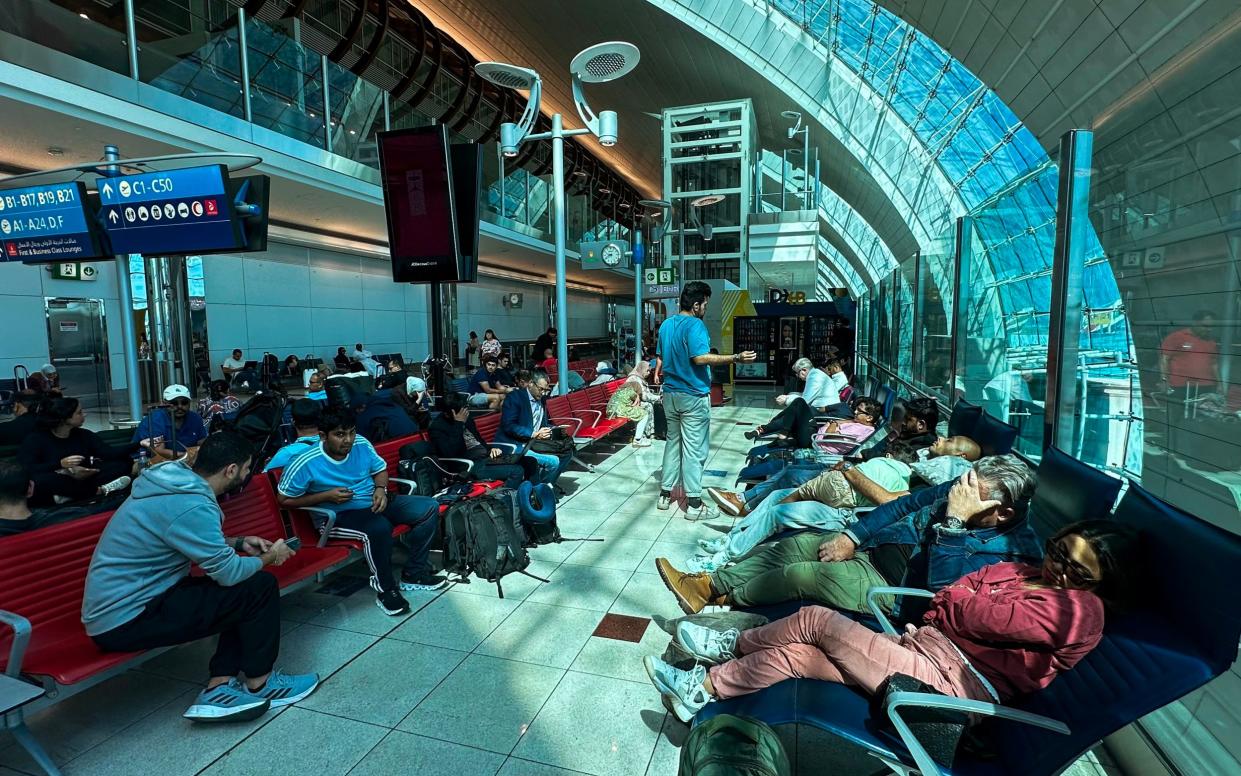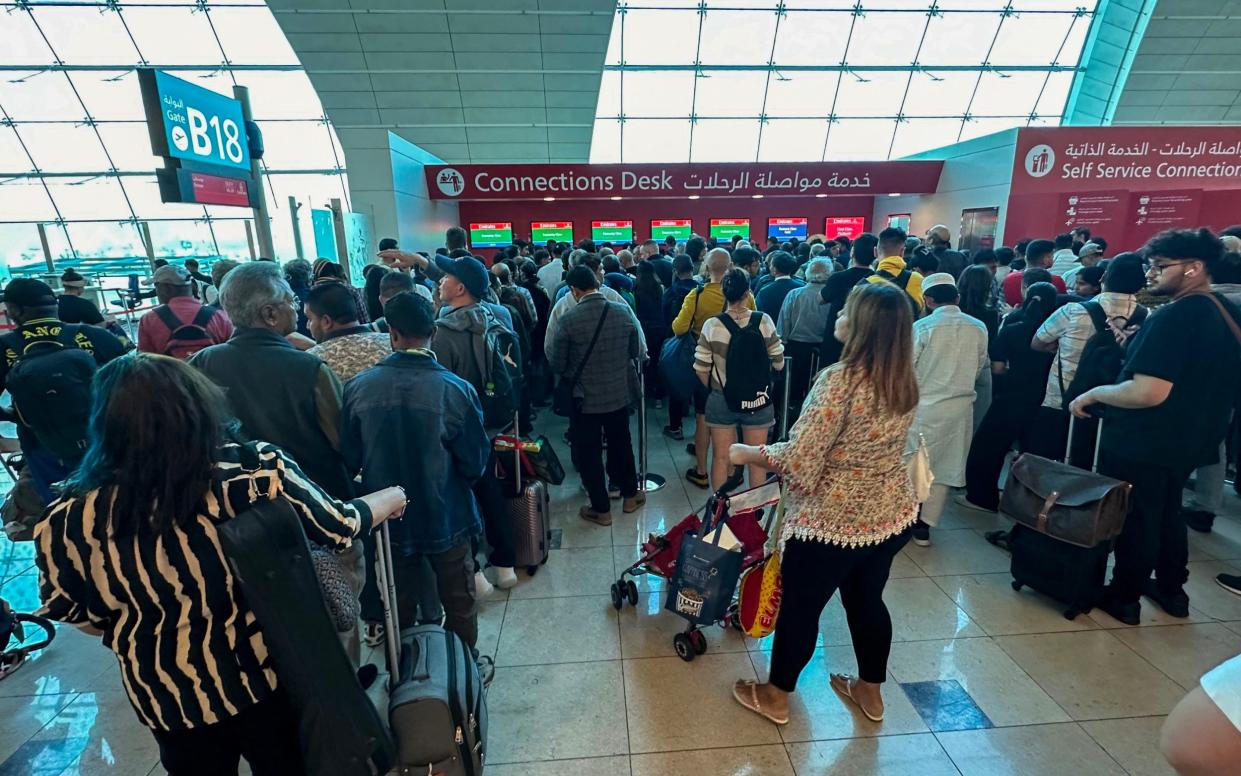Cloud seeding blamed for Dubai downpour
Cloud seeding has been blamed for record rainfall that flooded Dubai and killed at least one person.
The United Arab Emirates, typically a dry and hot desert climate, saw the most rainfall in less than 24 hours since records began in 1949.
Cloud-seeding, an artificial way to make it rain, was introduced in 2002 to reduce concerns over water security and heat-related deaths.
The technique uses planes to inject chemicals into the clouds to try and speed up condensation which in turn creates rainfall.
On Sunday, two days before the region saw a year and a half worth of rainfall in one day (14cm), the UAE carried out cloud-seeding efforts, according to flight-tracking data analysed by the AP.
Several cloud-seeding planes were flown in the days leading up to the unprecedented weather, Ahmed Habib, a meteorologist at the UAE’s National Center for Meteorology told Bloomberg.
“For any cloud that’s suitable over the UAW you make the operation,” Habib said.

The National, a state-linked newspaper in Abu Dhabi, quoted an anonymous official from the National Center for Meteorology on Wednesday as saying that no cloud-seeing took place on Tuesday, the day of the rainfall.
They said the operation was performed on Sunday and Monday.
However, experts said that while cloud seeding could have enhanced the rainfall, it would be misguided to pin such an “unprecedented” downpour on it.
“It is very unlikely that cloud seeding would cause a flood,” Roslyn Prinsley, the head of disaster solutions at the Australian National University Institute for Climate, Energy and Disaster Solutions, told TIME magazine, describing such claims as “conspiracy theories”.
It is not the first time that cloud seeding has been accused of creating disastrous floods in Dubai and around the world.


In February, California was battered by heavy storms that flooded the state and social media users accused officials working on a cloud seeding pilot program with causing the storms, despite the technology not even being used before them.
Dubai and surrounding areas are not properly equipped to tackle the amount of rainfall they received on Tuesday due to the lack of drainage.
This causes major flooding on roads and at the airport where operations were suspended for 25 minutes.
Local media reported that an elderly Emirati man in his 70s died on Tuesday morning when his vehicle was caught in flash floods in the Ras Al Khaimah emirate, in the country’s north.
In neighbouring Oman, 19 people died, including school children after three consecutive days of heavy rain, according to Omani media.
Although heavy rains had eased by late Tuesday, disruption is expected to continue.
The government ordered its employees and all schools to work remotely on Wednesday, for a second consecutive day.
UAE media and social media posts showed significant damage from the torrential downpour in some parts of the country, including collapsed roads and homes inundated by water.
Social media posts on Tuesday showed flooded roads and car parks with some vehicles completely submerged. Sheikh Zayed Road, a 12-lane highway through Dubai, was partially flooded, leaving people stuck in a kilometres-long traffic jam for hours.
The shopping centres Dubai Mall and Mall of the Emirates also both suffered flooding, at least one Dubai Metro station had ankle-deep water.


